Safety and Efficiency Combined: The Role of Automated Steel Coil Packaging Systems
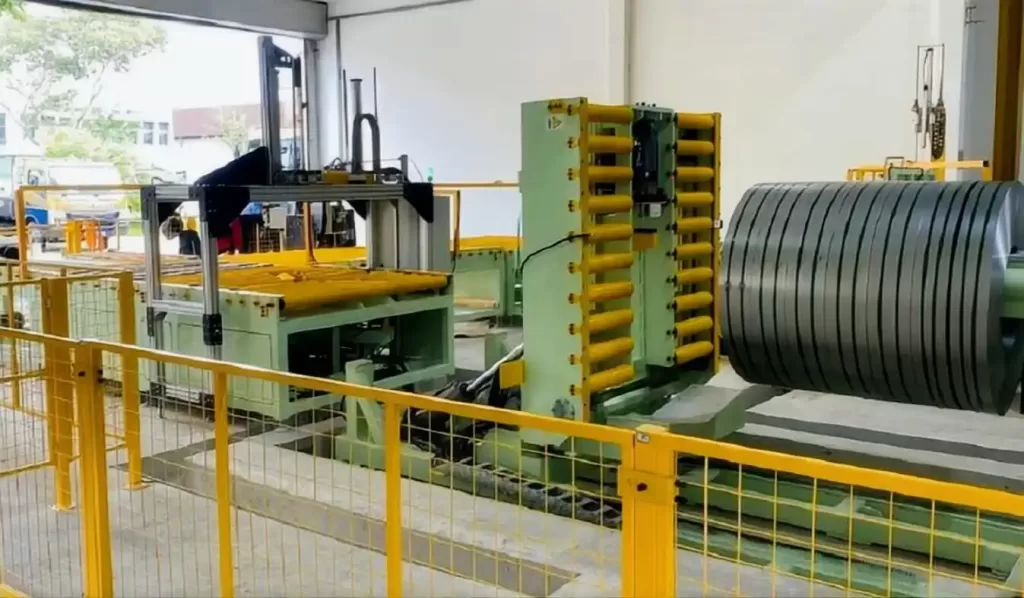
Introduction
In modern steel processing and manufacturing, the shift towards automating steel coil packaging reflects a strategic focus on operational efficiency and workplace safety. Handling large, heavy steel coils presents inherent risks and logistical challenges. Automated steel coil packaging systems address these issues by employing machinery and control systems to manage the handling, wrapping, securing, and labeling of coils with minimal manual intervention. These systems are crucial for maintaining throughput, ensuring packaging consistency, and protecting personnel.
Traditional packaging methods often rely heavily on manual labor, introducing variability and potential safety hazards. In contrast, automated systems utilize technologies such as robotics, advanced sensors, and integrated controls to standardize the process. This article examines the function and significance of automated steel coil packaging systems, detailing their components, operational benefits, safety enhancements, and the technologies that drive them.
1. Why Automate Steel Coil Packaging? Safety and Operational Drivers
The primary drivers for automation in steel coil packaging are the reduction of manual handling risks and the improvement of operational consistency and speed. Steel coils can weigh several tons, making manual maneuvering and packaging strenuous and hazardous. Automated systems significantly mitigate these risks by performing tasks such as lifting, tilting, transporting, and wrapping coils.
Beyond safety, automation introduces substantial efficiency gains. Automated packaging systems operate continuously and at optimized speeds, often exceeding manual capabilities. They ensure uniform application of packaging materials (like stretch film or strapping) according to predefined parameters, reducing material waste and ensuring load stability. By integrating various steps—such as weighing, labeling, wrapping, and strapping—into a cohesive workflow, these systems minimize bottlenecks and downtime, contributing directly to higher throughput. Furthermore, the reduction in manual intervention lowers the probability of human error, which can lead to product damage or accidents.
2. Key Components of an Automated Steel Coil Packaging System
A typical automated steel coil packaging system integrates several specialized modules working in concert. Understanding these core components clarifies the system's functionality:
- Coil Handling Equipment: This includes machinery designed to safely manipulate coils. Common examples are coil cars for transport, upenders/downenders for orientation changes, C-hooks or grabs for lifting, and conveyors or Automated Guided Vehicles (AGVs) for movement between stations. These components eliminate hazardous manual lifting and positioning.
- Wrapping and Strapping Machines: These are central to protecting the coil. Orbital stretch wrappers apply layers of protective film around the coil's circumference and through the eye. Through-eye wrapping machines specifically secure the inner and outer diameters. Strapping machines apply steel or PET bands circumferentially or radially to secure the coil or attach protective materials. These machines offer adjustable tension and patterns for different coil sizes and protection needs.
- Control Systems: Usually managed by Programmable Logic Controllers (PLCs) and Human-Machine Interfaces (HMIs), these systems coordinate the actions of all mechanical components. They allow operators to set parameters (e.g., wrap count, strap tension), monitor system status, receive diagnostic alerts, and often integrate with higher-level plant management systems (MES/ERP).
- Safety Systems: Essential for protecting personnel and equipment, these include physical guarding, light curtains, safety mats, emergency stop circuits, and sensors that detect incorrect coil positioning, obstructions, or equipment malfunctions. Alarms and status indicators alert operators to potential issues.
Each component is engineered to contribute to both the efficiency of the packaging process and the safety of the operating environment.
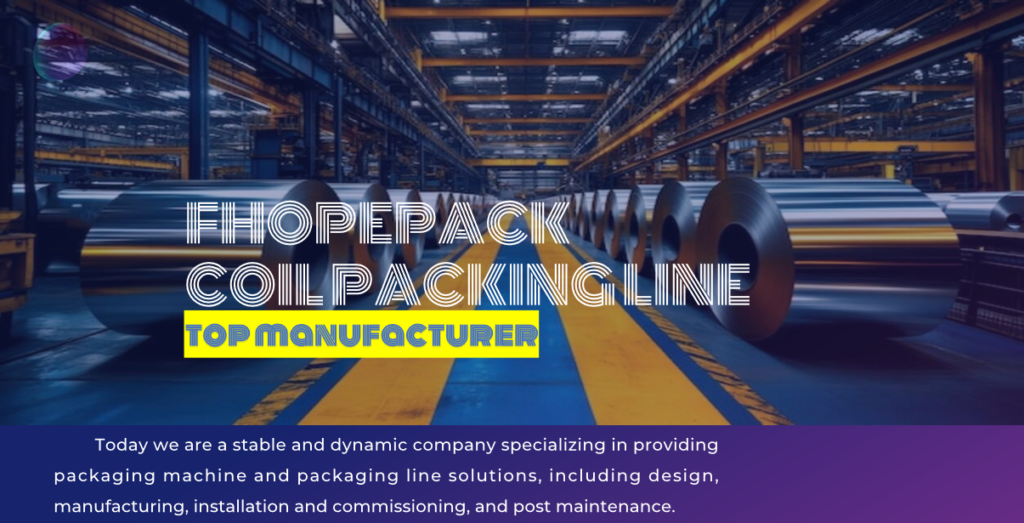
3. Enhancing Workplace Safety Through Automated Coil Handling and Packaging
A primary advantage of automated steel coil packaging systems is the significant improvement in workplace safety. Manual handling of heavy coils exposes workers to risks of musculoskeletal injuries (strains, sprains) from lifting and repetitive motions, as well as acute injuries from dropped loads or equipment interactions. Automation drastically reduces direct human contact with the coils during packaging.
Modern systems incorporate multiple layers of safety technology:
- Physical Guarding: Barriers and fencing restrict access to hazardous areas during operation.
- Presence Sensing Devices: Light curtains, laser scanners, and safety mats detect personnel entering restricted zones, triggering a system halt.
- Emergency Stops: Accessible E-stop buttons allow immediate shutdown in case of emergency.
- Interlocks: Doors and access points are often interlocked, stopping machinery if opened during operation.
- Load Monitoring: Sensors prevent handling equipment from exceeding capacity limits.
By minimizing manual handling and integrating robust safety features aligned with standards like OSHA regulations and ISO guidelines, automation helps create a safer work environment, reducing accident frequency and severity, associated costs (claims, downtime), and fostering better employee morale.
4. Enhanced Efficiency and Productivity in Packaging Operations
Automated steel coil packaging systems deliver significant improvements in operational efficiency and productivity compared to manual or semi-automated methods. Key factors contributing to these gains include:
- Speed and Consistency: Automated machines perform wrapping, strapping, and handling tasks faster and more consistently than human operators, reducing cycle times per coil.
- Continuous Operation: Systems can operate 24/7 with minimal interruption, unlike manual processes affected by operator fatigue or shift changes.
- Reduced Errors: Automation minimizes errors in packaging application (e.g., incorrect wrap count, improper strap placement) that could lead to damage or rework.
- Streamlined Workflow: Integrating multiple packaging steps (e.g., weighing, wrapping, strapping, labeling, palletizing) into a single automated line eliminates intermediate manual handling and queuing, improving overall throughput.
These efficiency improvements allow manufacturers to handle higher production volumes, meet tighter delivery schedules, and optimize resource allocation within the plant.
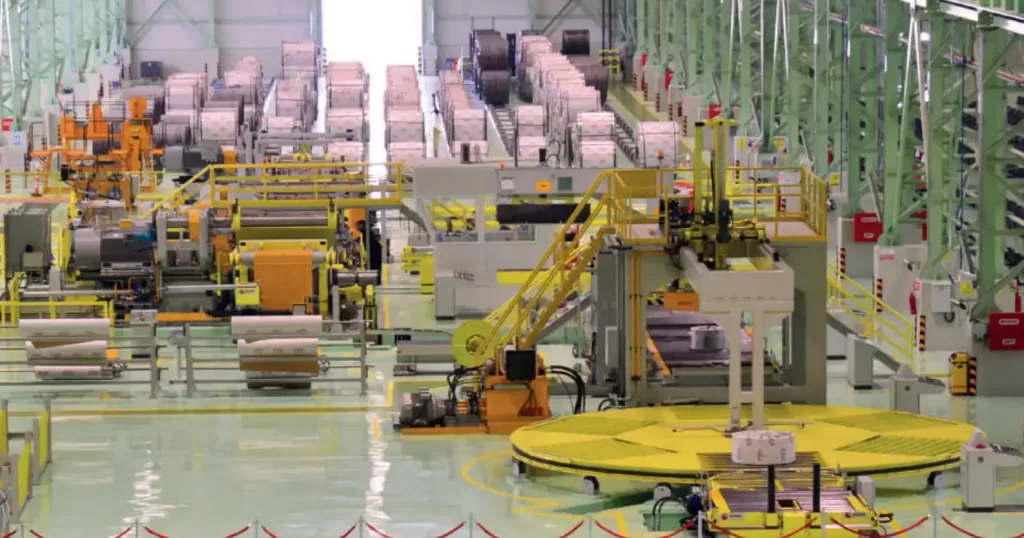
5. Analyzing Cost Efficiencies: Labor, Maintenance, and Material Usage
While the initial capital investment for an automated system can be substantial, it typically yields long-term cost savings. These savings manifest in several areas:
- Reduced Labor Costs: Automation significantly decreases the number of personnel required for packaging tasks, lowering direct labor expenses and associated costs (training, benefits). Skilled workers can be redeployed to higher-value activities.
- Lower Maintenance Costs: Automated systems, when properly maintained, often have predictable maintenance schedules. Features like predictive maintenance (using sensor data to anticipate failures) can prevent costly emergency repairs and unplanned downtime. Consistent operation within design parameters can reduce wear compared to potentially inconsistent manual operations.
- Optimized Material Usage: Automated wrappers and strappers apply materials precisely, minimizing overuse of stretch film, strapping, or corner protectors compared to manual application, leading to direct material cost savings and waste reduction.
- Reduced Product Damage: Consistent and secure packaging minimizes damage during handling and transit, reducing costs associated with returned goods, claims, and reprocessing.
A thorough Return on Investment (ROI) analysis should consider these factors alongside the initial investment cost.
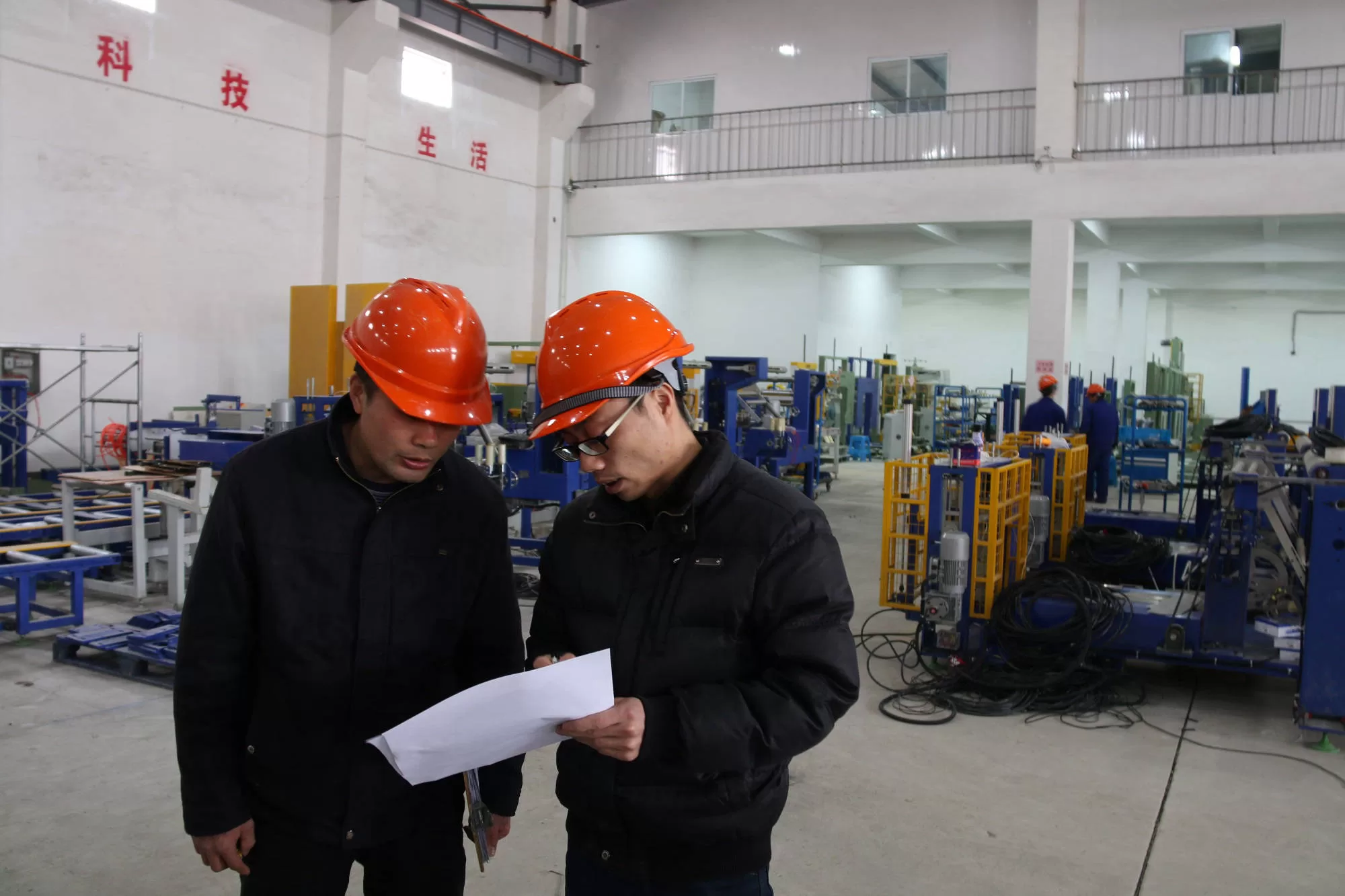
Get Your Best Solution !
6. Advanced Technology for Improved Quality Control
Maintaining consistent packaging quality is vital to prevent coil damage and ensure customer satisfaction. Automated steel coil packaging systems integrate technologies that enhance quality control:
- Precise Parameter Control: Systems allow setting and maintaining exact parameters for wrapping tension, number of wraps, strap tension, and strap positioning, ensuring uniformity across all coils.
- Integrated Measurement: Some systems incorporate automated checks for coil dimensions (width, diameter) or weight verification to ensure the correct packaging profile is applied.
- Vision Systems: Cameras can be used to inspect wrap integrity, label placement accuracy, or the condition of the coil surface before packaging.
- Data Logging and Traceability: Systems often log packaging parameters for each coil, providing a record for quality assurance and traceability. This data can be used for process analysis and continuous improvement.
By embedding quality checks and ensuring repeatable application, automation helps manufacturers consistently meet packaging specifications and quality standards.
7. Flexibility and Customization to Meet Unique Production Needs
Steel processors handle coils with varying dimensions, weights, surface requirements, and customer specifications. Modern automated packaging systems offer significant flexibility and customization:
- Adjustable Parameters: Operators can easily adjust settings for different coil sizes and packaging requirements via the HMI. Recipes for specific products can often be stored and recalled.
- Modular Design: Many systems are modular, allowing manufacturers to select and combine different handling, wrapping, and strapping modules to create a line tailored to their specific needs. This also facilitates future upgrades or modifications.
- Handling Versatility: Coil handling equipment can be designed to accommodate a wide range of coil diameters, widths, and weights.
- Material Options: Systems can be configured to work with various packaging materials (different film types, steel vs. PET strapping) and apply different protective elements (e.g., edge protectors, outer wraps).
This adaptability allows a single automated line to handle diverse product mixes efficiently, making it a versatile solution for varied production environments.
8. Leveraging Smart Technology: IoT, Sensors, and Data Analytics in Coil Packaging
The integration of smart technologies, often associated with Industry 4.0, further enhances the capabilities of automated packaging systems:
- Smart Sensors: Beyond basic safety functions, sensors monitor machine health (vibration, temperature), material consumption (film levels, strap coils), and process parameters (tension feedback). Examples include load cells, laser distance sensors, proximity switches, and vision sensors.
- IoT Connectivity: Connecting the packaging line to the plant network and the Internet of Things (IoT) enables remote monitoring, diagnostics, and data collection. Operators and maintenance teams can access real-time status and performance data via dashboards or mobile devices.
- Data Analytics: The data collected by sensors can be analyzed to identify trends, optimize cycle times, predict maintenance needs (predictive maintenance), track Overall Equipment Effectiveness (OEE), and pinpoint areas for process improvement.
- Integration with Plant Systems: Control systems can integrate with Manufacturing Execution Systems (MES) or Enterprise Resource Planning (ERP) systems for seamless data flow regarding production orders, coil identity, and packaging status.
These technologies provide greater operational visibility and control, enabling data-driven decision-making for continuous improvement.
9. Reduced Environmental Impact through Optimized Resource Usage
Sustainability is an increasing focus in manufacturing. Automated packaging systems can contribute to environmental goals in several ways:
- Material Optimization: Precise control over stretch film usage (pre-stretch capabilities, adjustable tension) and strap application minimizes material consumption and waste compared to less controlled manual methods.
- Energy Efficiency: Modern systems often incorporate energy-efficient motors, drives, and control logic, reducing overall power consumption. Optimized cycle times also mean less energy used per coil packaged.
- Compatibility with Sustainable Materials: Systems can be designed or adapted to use recyclable or biodegradable packaging materials where feasible.
- Reduced Product Loss: By ensuring secure packaging, automation reduces the likelihood of product damage, which itself represents wasted resources and energy.
While automation requires energy, its efficiency in material usage and process optimization often leads to a net reduction in the environmental footprint per packaged coil.
10. Improving Workplace Safety and Compliance with Regulatory Standards
Meeting safety regulations (e.g., OSHA in the U.S., CE marking in Europe) is non-negotiable in industrial settings. Automated steel coil packaging systems are designed with compliance as a core requirement.
- Built-in Safety Features: As detailed in Section 3, features like guarding, interlocks, and E-stops are integral to the system design, directly addressing regulatory requirements for machine safety.
- Ergonomic Benefits: By eliminating heavy manual lifting and repetitive tasks, automation significantly reduces ergonomic risks, helping employers comply with guidelines aimed at preventing musculoskeletal disorders.
- Documentation and Training: Reputable system suppliers provide comprehensive documentation on safe operation and maintenance procedures, supporting employer compliance and training obligations.
Implementing well-designed automated systems is a proactive measure to ensure compliance, reduce liability, and demonstrate a commitment to worker safety.
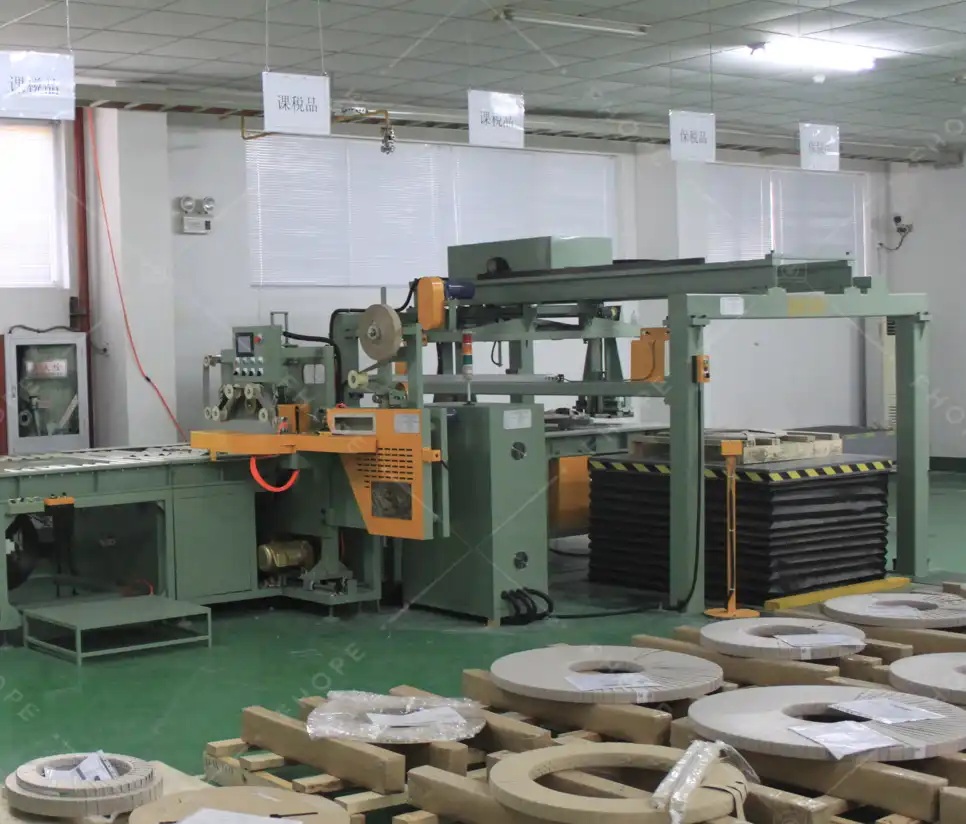
11. Evaluating the Return on Investment (ROI) of Automated Systems
A key step before implementing automation is a thorough Return on Investment (ROI) analysis. While the upfront cost is significant, the long-term financial benefits often justify the investment. Factors to include in an ROI calculation are:
- Tangible Savings:
- Reduced direct and indirect labor costs.
- Decreased costs associated with workplace injuries (insurance premiums, compensation, lost time).
- Savings from reduced packaging material consumption.
- Lower costs from product damage during handling and shipping.
- Potential reductions in maintenance costs (especially with predictive maintenance).
- Intangible Benefits:
- Increased throughput and production capacity.
- Improved packaging quality and consistency, enhancing brand reputation.
- Enhanced worker safety and morale.
- Greater operational flexibility and reliability.
Quantifying these factors allows businesses to project the payback period and long-term financial contribution of the automated system, supporting an informed investment decision.
Conclusion
Automated steel coil packaging systems offer a compelling combination of enhanced workplace safety and improved operational efficiency for the steel industry. By leveraging advanced handling, wrapping, and control technologies, these systems effectively mitigate the risks inherent in manual coil packaging while increasing throughput, ensuring consistency, and optimizing resource usage. The integration of safety features, coupled with the potential for significant cost savings in labor, materials, and maintenance, makes automation a strategic investment.
As manufacturers continue to pursue higher levels of productivity, quality control, and safety compliance, the adoption of sophisticated automated packaging solutions becomes increasingly vital. These systems represent a key enabler for modernizing steel processing operations, providing the reliability and performance needed to compete effectively in a demanding global market.

Get Your Best Solution !